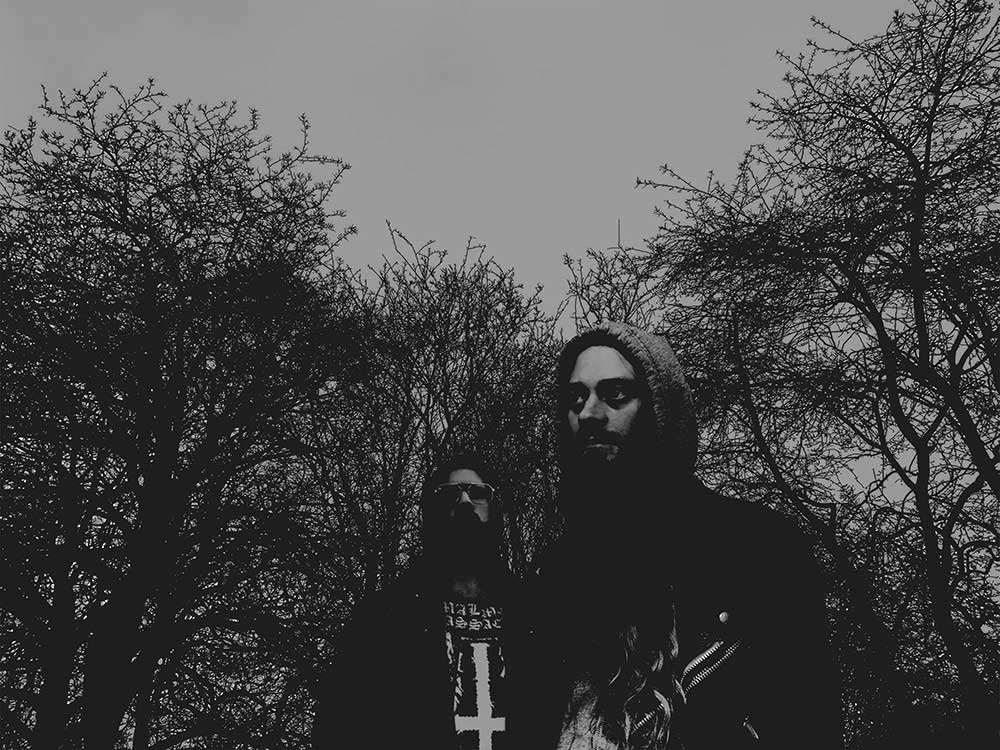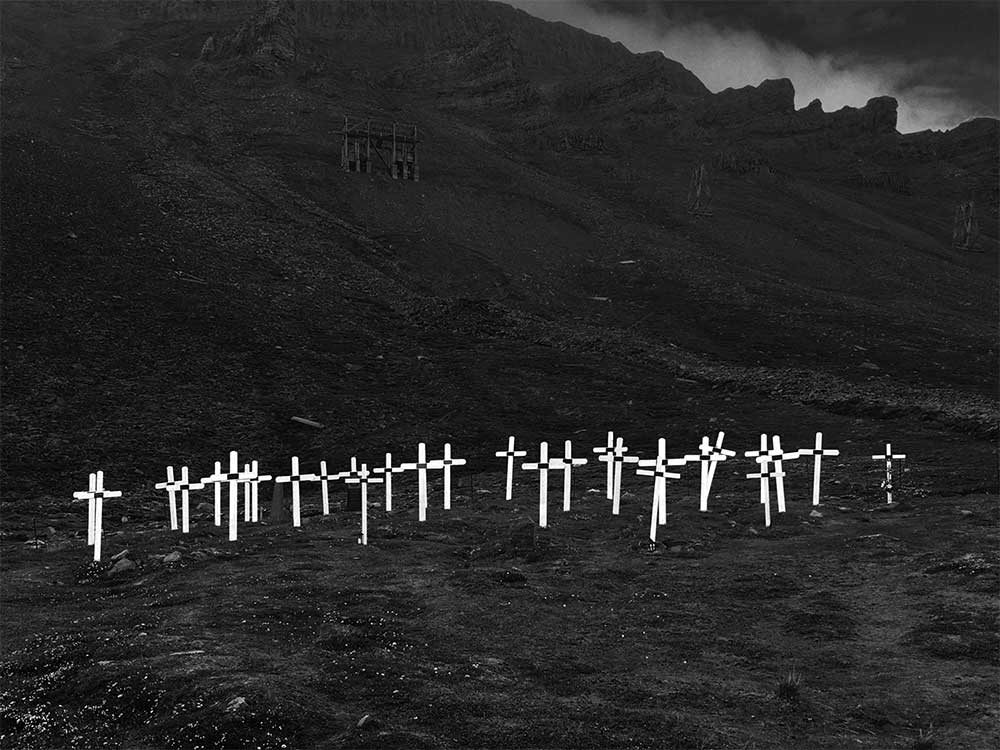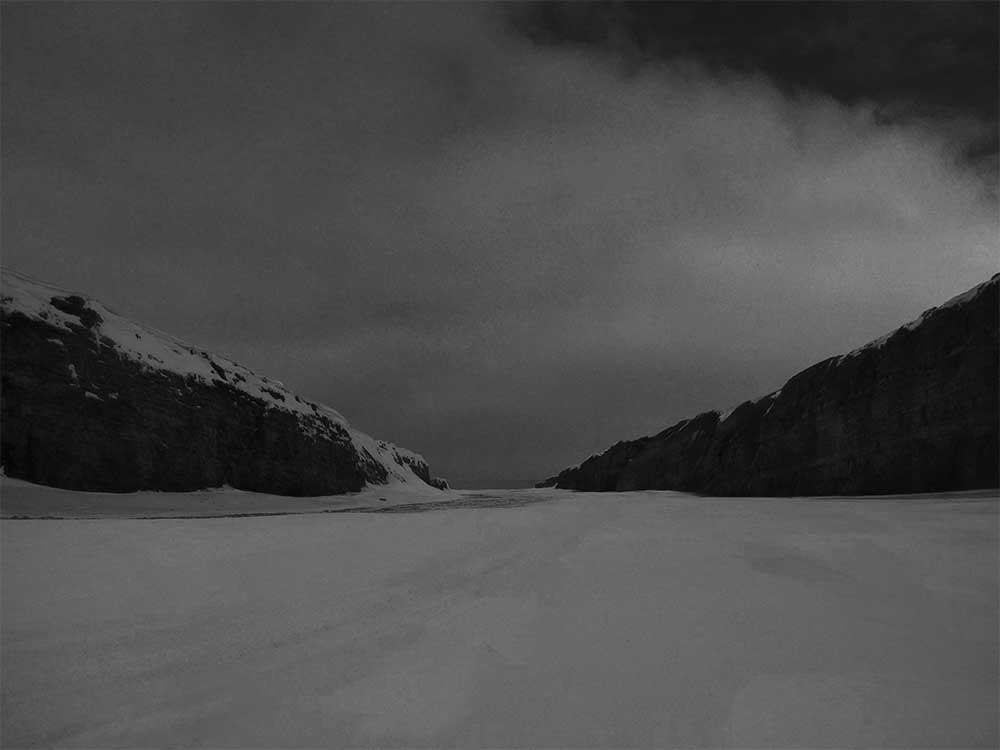Jordfäst
2021-04-09
by Niklas Göransson
Songs of earthen frailty and mortal folly – Swedish black metal duo Jordfäst is the latest addition to the Nordvis roster. A discussion about human death and aquatic life.
– Our ambition is to combine words and tunes in a manner where the more dramatic lyrics are carried up by accelerating music, says Elis. The arrangements vary from extremely simple, almost non-existent, to complex and theatrical: sort of like a soundtrack. I prefer telling dark, cold, and tragic tales since they pose the challenge of not only being brutal and extreme, but also delving deeper into certain emotional dimensions I’d be unable to find without the lyrical themes we explore.
“Hädanefter” is due for a May 7 release, courtesy of Nordvis Produktion. Nordvis seem to have a knack for unearthing hitherto unknown acts with a very similar vibe. I’m not quite sure if this is because such bands are actively drawn to the label, or if Andreas is good at tracking down young projects with that type of sound.
– In the case of JORDFÄST, says Olof, it was definitely us who hunted down Andreas. I discovered Nordvis with the 2005 GRIFT and SAIVA split and spent that whole summer listening to “Sjiedvárre” on repeat. It had a raw and uncompromising sound which gave me the same kind of feeling as when I heard ARMAGEDDA for the first time; thoroughly unsurprising, given Andreas’ involvement in both them and SAIVA. I’ve never been interested in specific labels before, but quickly discovered plenty of additional Nordvis acts in line with my taste. The more I listened, the more I learned that Nordvis was not just a label but also a vision and a statement about nature and the ways of old. And this is no simple gimmick, which I often find to be the case. Once our music had developed into something worthy of presenting to an audience beyond our nearest circle, Nordvis felt like the natural choice. My guess would be that, with the advancement of technology, labels have become less important for distribution – to the detriment of important community-building aspects. I feel this is the strength of Nordvis. Andreas takes a great interest in the bands: not just as business partners but also as a means of building a community of like-minded people.

JORDFÄST consists of two old friends: Elis and Olof. The former writes and performs the music as well as the clean vocals whereas the latter is the band’s lyricist and primary orator.
– Elis has always been deeply involved in music, says Olof, but I had a break spanning three or four years when I moved away from Småland. I kept my creative fire burning by writing prose and poetry, but always wanted to get back into music. When both of us ended up living in Skåne, it didn’t take long before we started recording songs as a way to hang out. At first, the material was really simple: punk-like arrangements, two or three riffs per song, and lyrics I’d written without any kind of melody in mind. We worked well together, sharing many of the same ideas, and I feel it was a natural evolution that we began writing more elaborate stuff. I think the tipping point was when Elis came up with the opening melody for what later became “Buren av loppor”. It was exactly the type of music I wanted to make! Melancholic, ominous, and eerie. We both felt this was the direction we should take – that it would demand a greater investment of time and effort to get to where we wanted to be. As we developed the song, it felt as if the story kept revealing itself through the notes… and the idea for the lyrics was born.
The album is thirty-three minutes and contains two songs: “Buren av loppor” and “Hädanförd”. These are probably the most impressive Swedish lyrics I’ve come across in a while – well-researched and riddled with clever metaphors.
– I put a lot of time and effort into my lyrics, and Elis has brilliant visions of how certain parts should be structured. He’s also vital for filling in lyrical gaps that I myself struggle to complete. We work a lot with different perspectives, which I find essential when dabbling in historical topics. We want to include reflections and emotions, as this gives the story life. I get terribly bored when bands just regurgitate texts copy-pasted from history books or repeat the same old myths we’ve already heard a thousand times over. That’s not to say mythology and legend have no place in lyrics, as they too grant interesting perspectives. You mentioned metaphors: perhaps it goes without saying, but I try to write the lyrics in a way where listeners can interpret them as they wish. I want the events described to give rise to a thought process, as opposed to just being taken at face value.
– It’s easy to write harsh songs speaking of murder, Satan, sorrow, and wrath, says Elis, but I’m looking for desperation, deep tragedy, nothingness, being proven wrong, growth, harvest… the beauty of life, and salvation in death. The story behind every forgotten or never-heard scream of our livid but still-vibrant past. It pushes me to find parts of myself I have yet to see; it’s almost therapeutic in a way. We try to tell stories from many perspectives in both time and space, which is what grants our songs their epic scope.
– I suppose I could go into detail about every little formulation and their relevance, says Olof, but that would remove some of the magic. And, I think, bore your readers to death, so I’ll stick to a brief outline. “Buren av loppor” – which translates to ‘carried by fleas’ – follows the spread of the Black Death chronologically, from the start. First through the eyes of a Central Asian farmer, then to the siege of Caffa, and, finally, the infamous plague-ship that arrived in Bergen, Norway, in 1349. It then moves on to look through the viewpoint of Scandinavians as they watch their numbers dwindle, with friends and family members perishing right in front of them. “Hädanförd” is a play on words; it basically means ‘dead’. It starts off by following a family of heathens where the mother is stricken by insanity following the death of her husband. Her children are persuaded to accuse her of witchcraft, and she is burned at the stake. The youngest of them dies during sleep after a visit from the mother’s restless spirit, leaving her siblings as orphans. It then shows how the community is desperately trying to rid the land of all incarnations of the Devil… only to realise that, by doing so, they’ve been carrying out his work all along.

So, the lyrics are more about the philosophical aspects than wallowing in the loss of life?
– Yes. I don’t see myself as a spiritual person, and I’m definitely not religious, but there is undoubtedly something awe-inspiring about the brutality and ruthlessness of nature’s forces. Likewise, human misery and cruelty can be deeply fascinating. I don’t look for meaning behind these events, as I don’t think such a thing even exists. Rather, our fascination with death and suffering comes from a desire to understand human nature when it’s faced with overwhelming hardship.
Olof told me his time in the Norwegian archipelago of Svalbard – about midway between the country’s coastline and the North Pole – has been highly formative on a personal, professional, and artistic level. For starters, that’s where he found his calling as a marine biologist. I’ve been going through some photos of Svalbard: the mountains are majestic, the aurora borealis looks amazing, and I’d murder to see a polar bear in its natural habitat. But it does seem pretty damn dreary once the novelty wears off
– It is a magical place. My time there made me fall in love with the Arctic, which is why I moved to Tromsø some years ago. I was recently offered a PhD position in Svalbard, but four years felt like too long. Going there for a month or two of fieldwork is quite enough. It’s a very isolated place, both for its geographical remoteness but also in terms travel options. The road doesn’t extend far from Longyearbyen – the main town – so you must rely on snowmobiles or boats, look for optimal weather conditions, and ideally have a satellite phone or emergency beacon since cellular reception doesn’t reach far outside of town. Not to mention the ever-present risk of the aforementioned polar bears; it gets a bit tiresome, always carrying a heavy rifle when you’re just going for a hike. Tromsø is perfect for me: still in the Arctic, surrounded by mountains, and the ocean is easily accessible. Plus, the auroras and fishing are way better here.
What about the Arctic is it you find so appealing?
– Several aspects! Taking Svalbard as an example: the landscape itself is bleak and barren. No trees, just vast mountains and endless ice. It’s a place that can’t sustain human life on its own, and people have only settled there for little over a hundred years. Months of total darkness as the sun comes nowhere near the horizon. Very black metal, if I may. And beautiful. It’s also an area with great contrasts… high peaks rising above the ocean, polar nights replaced by the midnight sun, and so on. Whilst inhospitable to our species, Svalbard hosts an abundance of life – whales, polar bears, walruses, and seals – which makes it somewhat of a marine biologist’s paradise. Perhaps ‘abundance’ is an overstatement though… several of the marine mammal species were almost hunted to extinction over the course of hundreds of years. This brings us to the last reason why Svalbard had such an impact on me: the human history in the archipelago. It’s filled with fascinating and tragic tales. Huge whaling expeditions where the massive beasts were slaughtered by the thousands and then boiled to oil, Arctic explorers and trappers conquering or being conquered by the unforgiving forces of nature, and mining operations in the ancient mountains linked with accidents costing hundreds of lives.

Marine biology – now this is a field in which much remains to explore, seeing as how humankind has only explored about twenty percent of the world’s bodies of water.
– The ocean has been an ever-present mystery and force in my life. As a kid, I spent my summers at the coast – in a little town called Skälderviken in Skåne – watching storms blow in from the sea and exploring the underwater world with my cyclopes and snorkel. What captivates me so is the great unknown lurking beneath the surface. We can get a glimpse of it through diving, fishing, or by scientific sampling, but the vast majority of the depths remain uncharted territory. I look up to great explorers like Amundsen and Nansen, who risked their lives to discover what lay beyond the maps. As we have covered all the white spots of the charts today, I think their legacy continues by deep-sea studies.
A while back, I read about an American palaeontologist by the name of Mark McMenamin who claims to have found evidence that speaks to the existence of a Triassic kraken – the giant octopus-like sea monster of legend. In 2011, after discovering the bones of an ichthyosaurs arranged in a manner which contemporary octopi are apparently known for, McMenamin announced that his team had found the lair of an ancient kraken. Two years later, an identical set of bones were found accompanied by a fossilised beak that supposedly belonged to a humongous cephalopod. I’m clearly no biologist, marine or otherwise, but it certainly is stirring for the imagination to consider.
– As much as I love to fantasise about what roams under the surface, I keep a sceptic approach to these topics. To my knowledge, McMenamin‘s conclusions about the supposed ‘kraken’ are exaggerated, at best, and have been subject to heavy criticism. It’s easy to get carried away when you make unusual findings, and you forget the most useful of tools in a scientist’s arsenal: Occam’s razor. Nonetheless, the oceanic depths cover gigantic areas, so I’m not ruling out the possibility that they can hide great beasts currently unknown to us. But what’s wrong with the animals we can already observe? I mean, bowhead whales are fifteen to twenty meters long and equipped with a set of testicles that each weigh as much as a walrus. Blue whales can grow up to thirty meters. Sperm whales dive down two thousand metres (1,25 miles) to hunt both giant and colossal squid. Speaking of cephalopods, these creatures have extraordinarily intricate nervous systems and impressive cognitive abilities, yet they are more closely related to mussels than any vertebrate. As this intelligence seems to have evolved parallel – so-called convergent evolution – to that of mammals. I find it fascinating to speculate about how they perceive the world.
What’s next for JORDFÄST?
– For all its downsides, the current pandemic has benefitted JORDFÄST in terms of creativity. With so much spare time, the mind gets restless; and when the mind gets restless it becomes creative. We’ve been working on songs at our respective ends of Scandinavia – sending ideas, lyrics, and sound files to each other. As for now, we have material for at least another album. We eagerly await less-strict border regulations between Norway and Sweden, so that we may once again immerse ourselves in the madness of the studio. I guess the details about the new works are a topic for future discussions, so all I’ll say is that the melodies Elis came up with are simply out of this world. They’ve sent me on a rough journey while writing the lyrics, from deep sorrow and abandonment to pure aggression and frustration. If you like “Hädanefter”, be ready for what the future holds!



